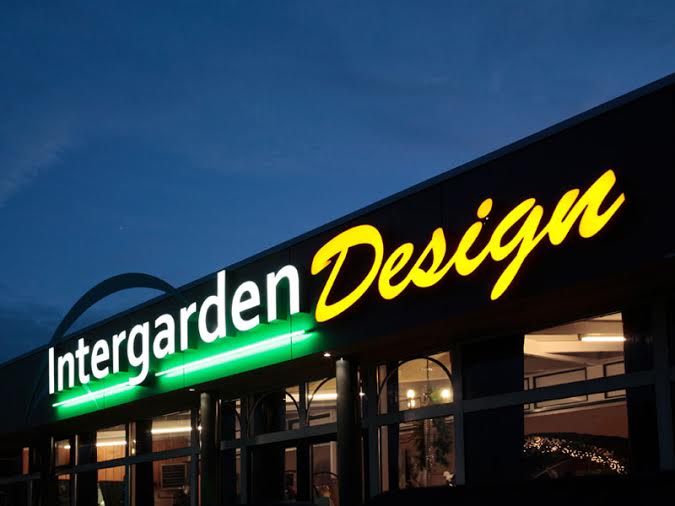Shop by project > Signage and Channel Letters
 |
 |
LED Strip Light for Signage Lighting:
If your company has a physical office or storefront, chances are you’ve at least looked into commercial signage at some point. If you already have a sign, chances are equally high that you’ve dealt with increased maintenance and energy costs as well as burnt out bulbs and tubes. As many business owners are discovering, these issues are now being addressed thanks to the versatility of LED signage lighting.
Because of their tiny size, LED chips can be aligned and configured in a variety of ways to illuminate infinite shapes of indoor and outdoor commercial signage. Flexfire LEDs UL Listed UltraBright™ LED strip lights are perfect for this sort of installation, providing brilliant, energy-efficient illumination that will last for several maintenance-free years. LED strip lights are thin, flexible, and come with adhesive backing, meaning they can be bent to follow various curves and angles such as those found in channel lighting. With optional IP weatherproofing, LED strip lights are also resistant to water and dust.
It’s important to note that unlike other lighting technologies, LEDs produce direct, precise illumination, a big part of why they’re used in televisions and smartphones. For this reason, LEDs are a perfect backlighting source for letters and company logos in box sign applications as well.
Additionally, improved technology means that the initial cost of LED lights has been dramatically reduced over the past few years, removing what has been the main barrier for many business owners.
There are four main advantages to using LED lighting for commercial signage as opposed to fluorescent or neon tubes: energy efficiency, durability, safety, and overall light quality. Let’s start by addressing energy efficiency, as it directly affects your company’s bottom line.
Energy Efficiency
High quality LED and fluorescent signage products are both capable of producing in excess of 100 lumens per watt, meaning they will produce a great deal of light while using very little power. This translates to much lower monthly energy bills, even if your sign is on for 18 hours a day (LEDs can really cut costs when we consider durability and replacement costs, but more on that in a minute.) Neon lights, in comparison, typically produce between 10 and 60 lumens per watt, meaning they require much more power to generate the same amount of light.
Durability
In this case, we should look at durability in two separate ways: how long the product will last, and the typical maintenance costs during its lifetime. Premium LED lighting products are typically rated to last up to 50,000 hours. Assuming 8 hours of use per day, this means your storefront LED lighting will last over 17 years. There are no glass parts to break, and no tubes that burn out and need replacing. It’s very likely that you will incur no service or maintenance costs during the lifetime of your LED sign.
Contrast this with fluorescent and neon lights, both of which contain sensitive glass parts that are subject to breakage. Most fluorescent lighting products last from 10,000-20,000 hours before replacement is necessary; further, they may not function properly in high humidity or extreme temperatures (below -10 degrees Fahrenheit or above 120 degrees Fahrenheit). Neon lights consist of fragile glass tubes that are filled with low-pressure neon gas. These tubes are susceptible to cracking, and once damaged, must be replaced. Easily breakable glass tubes and a collection of smaller parts mean increased maintenance costs, and the neon gas will eventually run out and need refilling. For these reasons, neon lighting is the least durable for commercial sign applications.
Safety
Both neon and fluorescent luminaires are made with fragile glass parts, and fluorescent lights contain an added danger in the form of mercury. Exposure to this highly toxic heavy metal is associated with a wide range of neurological, behavioral, and nervous system disorders. In fact, the U.S. Environmental Protection Agency recommends special handling to prevent mercury exposure should you accidentally break a fluorescent luminaire. Consider what this means with millions of people around the world dumping fluorescent lamps into landfills; the mercury from just one household bulb can contaminate 6,000 gallons of water! LED lights contain no breakable glass parts and no toxic mercury to worry about. Further, they remain cool to the touch even after several hours of use, unlike neon and fluorescents.
Light Quality
LED lighting is widely known for brightness and clarity, making it easy to read at greater distance or even in direct sunlight. Customization is also easy – LEDs are dimmable, and can easily be programmed or controlled via remote. RGB/multicolor LEDs are now widely available as well, adding dramatic emphasis to your brand image. Neon signs tend to look blurry from far away, and it can be rather expensive to produce neon lights for larger applications. Fluorescent lighting is notoriously uneven, and is prone to noticeable flickering. Detractors often refer to it as “cold” or “artificial”.
Considering all of these factors, it is easy to see why most business owners today choose LED lighting for commercial signage. LEDs produce bright, direct light that shines evenly across the entire surface of your sign, and is clearly visible from great distance. Highly efficient technology means you will save on energy and maintenance costs for years to come, and there are no toxic ingredients to worry about.
What you need:
Are you interested in installing LED signage lighting? Here is what you will need to complete your project:
Using a hardwired Lutron/Leviton Dimmer?
Using an in-line dimmer or no dimmer?
We're here to help
We are excited to answer any of your questions. Our design specialists are standing by and ready to dive right into your project and make it a success. No question is too small. (925) 273-9080 or Speak to one of our design specialists
____________________________________________________________________
